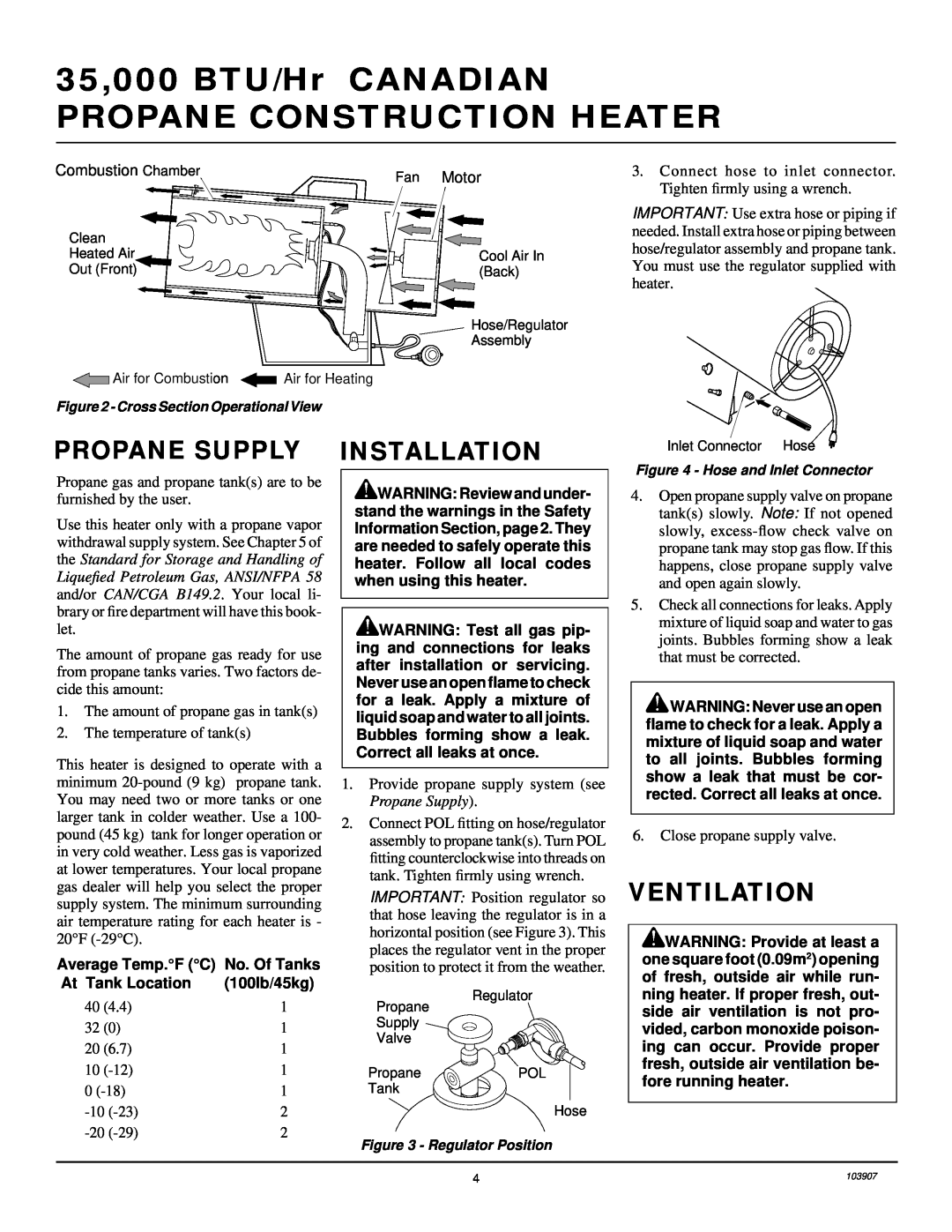Contents
CANADIAN PROPANE CONSTRUCTION HEATER
Model RCLP35B
WARNING FIRE, BURN, IN
SAFETY INFORMATION WARNINGS
WARNING NOT FOR HOME OR RECREATIONAL VEHICLE USE
UNPACKING
PRODUCT IDENTIFICATION
THEORY OF OPERATION
PROPANE SUPPLY INSTALLATION
VENTILATION
Average Temp.F C
No. Of Tanks
MAINTENANCE
OPERATION
STORAGE
To Start Heater
TROUBLESHOOTING
OBSERVED FAULT
POSSIBLE CAUSE
REMEDY
ELECTRICAL SYSTEM
SERVICE PROCEDURES
MOTOR
SERVICE PROCEDURES
Continued
IGNITOR
SPECIFICATIONS
TECHNICAL SERVICE
REPLACEMENT PARTS
ACCESSORIES
ILLUSTRATED PARTS BREAKDOWN
PARTS LIST
RCLP35B
DESA Industries of Canada, Inc
WARRANTY AND REPAIR SERVICE
LIMITED WARRANTY
APPAREIL DE
MANUEL D’UTILISATION
Modèle RCLP35B
35,000 BTU/Hr APPAREIL DE CHAUFFAGE AU PROPANE
INFORMATIONS CONCERNANT LA SÉCURITÉ
MANUEL DUTILISATION
INFORMATIONS
IDENTIFICATION DU PRODUIT
CONCERNANT LA SÉCURITÉ
INSTALLATION
ALIMENTATION EN PROPANE
35,000 BTU/Hr APPAREIL DE CHAUFFAGE AU PROPANE
Alimentation en propane
FONCTIONNEMENT
INSTALLATION
MANUEL DUTILISATION
VENTILATION
REMISAGE
ENTRETIEN
35,000 BTU/Hr APPAREIL DE CHAUFFAGE AU PROPANE
FONCTIONNEMENT
DÉPANNAGE
MANUEL DUTILISATION
PROBLÈ ME
CAUSE POSSIBLE
PROCÉDURES D’ENTRETIEN
35,000 BTU/Hr APPAREIL DE CHAUFFAGE AU PROPANE
CIRCUIT É LECTRIQUE
MOTEUR
ALLUMEUR
suite VENTILATEUR suite
MANUEL DUTILISATION
PROCÉDURES D’ENTRETIEN
ACCESSOIRES
CARACTÉRISTIQUES
35,000 BTU/Hr APPAREIL DE CHAUFFAGE AU PROPANE
Homologué U.L
SERVICEPIÈCES TECHNIQUE DÉTACHÉES
MANUEL DUTILISATION
Piè ces sous garantie
Piè ces non couvertes par la garantie
VUE ÉCLATÉE DES PIÈCES
35,000 BTU/Hr APPAREIL DE CHAUFFAGE AU PROPANE
É crou du
ventilateur
LISTE DES PIÈCES
MANUEL DUTILISATION
PIÈ CE
N DE RÉ F
35,000 BTU/Hr APPAREIL DE CHAUFFAGE AU PROPANE
MANUEL DUTILISATION
DESA Industries of Canada, Inc
GARANTIE ET SERVICE APRÈS-VENTE
CONSERVER CETTE GARANTIE GARANTIE LIMITÉ E
